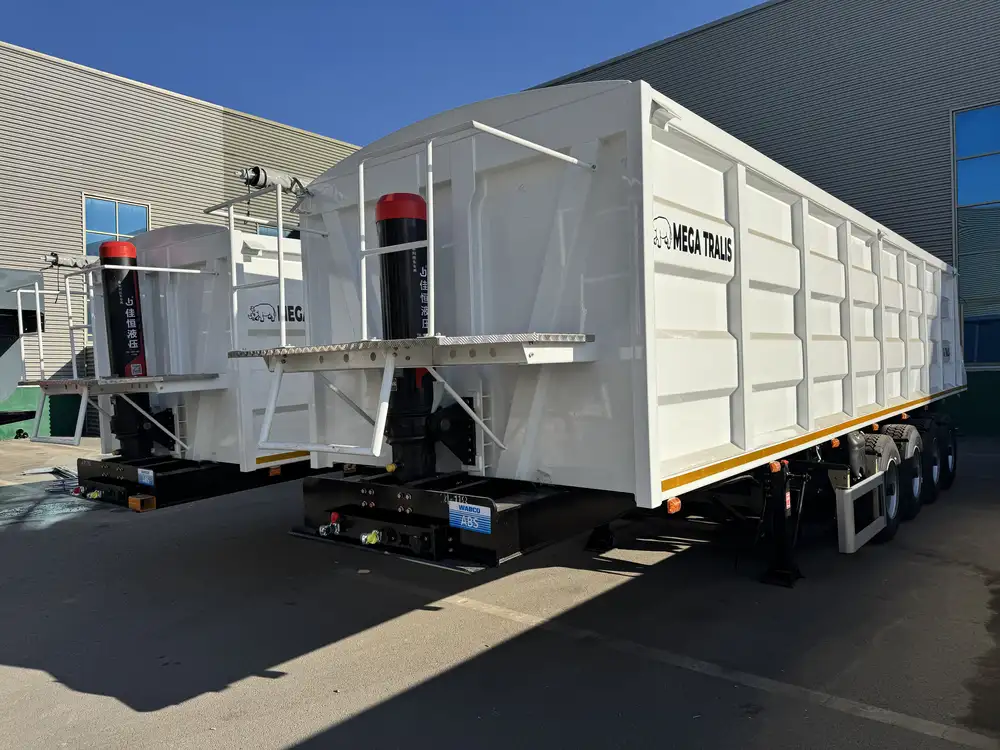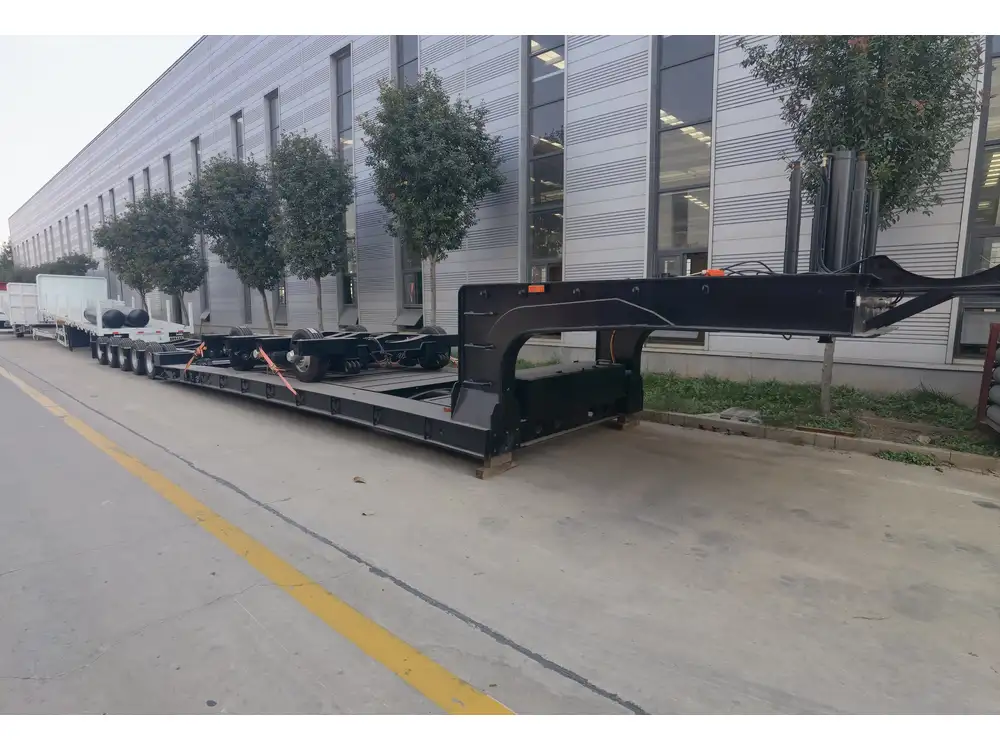When it comes to heavy-duty hauling needs, having a reliable dump trailer can be a game-changer. Dump trailers are ideal for transporting materials like gravel, dirt, or debris and can make landscaping and construction projects significantly more efficient. In this comprehensive guide, we will explore the intricacies of building a dump trailer, essential components, safety considerations, and expert tips to ensure your trailer meets both your standards and the demands of your projects.
Understanding the Basics of a Dump Trailer
A dump trailer essentially consists of a trailer that can be tilted to unload its contents easily. The tilt mechanism is generally powered by a hydraulic system, allowing for quick and smooth unloading. The primary components include:
- Trailer frame
- Axles and wheels
- Hydraulic lift system
- Dump bed
- Hitch system
Each of these components requires careful consideration in terms of size, weight capacity, and material quality to ensure durability and functionality.
Detailed Steps on How to Make a Dump Trailer

1. Planning and Design
The first step in crafting a dump trailer is detailed planning. Consider the following elements:
- Load Capacity: Determine how much weight you expect to transport regularly. This will inform materials and size.
- Dimensions: Typical dump trailers range from 5 to 16 feet in length and 6 to 8 feet in width. The height of the sides can also vary based on need.
- Materials: Choose sturdy materials like steel for the frame and bed, ensuring maximum durability.
Material Comparison
| Material | Pros | Cons |
|---|---|---|
| Steel | Highly durable | Can be heavy |
| Aluminum | Lightweight and rust-resistant | May be more costly |
| Wood | Cost-effective | Less durable, requires treatment |
2. Gather Tools and Materials
Before you commence construction, gather the necessary tools:
- Welding machine
- Angle grinder
- Drill and bits
- Measuring tape
- Jack and jack stands
- Hydraulic cylinders (for lifting)
- Steel beams and plates (for the frame and bed)
- Axles and tires
- Hitch assembly

3. Construct the Trailer Frame
The frame acts as the foundation of the dump trailer, enhancing stability and strength.
- Step 1: Cut the steel beams to your desired length and width, allowing for additional space if you’re including side walls.
- Step 2: Weld the beams together at the corners to form a rectangle. Make sure this frame is square and level.
4. Install Axles and Wheels
To support the trailer’s weight, precise installation of axles is crucial.
- Step 1: Decide on the axle placement, generally centered under the trailer frame.
- Step 2: Use a measuring tape to ensure both axles sit evenly. This will help in dispersing weight evenly across the trailer during load.
- Step 3: Secure the axles with approved brackets and attach wheels.
5. Build the Dump Bed
The dump bed is where the materials will be loaded and unloaded.
- Step 1: Cut steel plates to the desired length and width for the bed.
- Step 2: Choose a raised design which allows efficient dumping. The back of the bed must be able to lift to approximately 45 degrees or more for effective material release.
- Step 3: Weld the steel plates onto the trailer frame and ensure it’s securely attached.

6. Install the Hydraulic Lift System
The hydraulic lift system is the heart of the dump trailer, providing the necessary power to tilt the bed.
- Step 1: Position hydraulic cylinders at the front part of the dump bed, ensuring they can achieve the angle required.
- Step 2: Connect the hydraulic lines according to the hydraulic pump specifications.
- Step 3: Test the hydraulic system by connecting it to a power source and ensuring that it moves the bed smoothly.
7. Install the Hitch Assembly
The hitch ensures proper towing capacity and stability while driving.
- Step 1: Select a coupler appropriate for your towing vehicle. Typically, trailers employ either a ball hitch or a pintle hitch.
- Step 2: Securely weld the hitch assembly to the front of the trailer frame, ensuring that it is level and aligned with the trailer.
8. Safety Features and Final Assembly
Review your dump trailer for safety features, which are essential for legal and operational standards.

Required Safety Features:
- Lighting: Install tail lights, brake lights, and turn signals.
- Fenders: Include fenders over the tires to protect them from debris.
- Reflectors: Place reflective stickers on the sides and back for visibility, especially at night.
9. Painting and Finishing Touches
To enhance longevity and aesthetic appeal:
- Rust-proof Coating: Apply a rust-inhibiting primer followed by a topcoat to protect against environmental factors.
- Brand Identity: Consider adding your company’s logo if used for commercial purposes.
Maintenance Tips for Longevity and Efficiency
Having a dump trailer is an investment; therefore, regular maintenance is essential to ensure its longevity.
- Inspection: Regularly check all components, especially the hydraulic system and tires, for any signs of wear and tear.
- Lubrication: Keep moving parts well-lubricated to prevent rust and malfunction.
- Cleaning: Remove debris after each use to prevent buildup and corrosion.
- Tire Pressure: Regularly check tire pressure to maintain optimal performance and fuel efficiency.

Common Issues and Troubleshooting
Even with proper construction and maintenance, challenges can arise. Here are some common problems and how to address them:
| Issue | Possible Causes | Solutions |
|---|---|---|
| Hydraulic system fails | Leaks, worn-out seals | Inspect and replace seals |
| Tires wearing unevenly | Misalignment of axles | Realign axles and check load |
| Poor dump performance | Insufficient hydraulic pressure | Check fluid levels and leaks |
Conclusion
Constructing your own dump trailer can seem like a daunting task, but with proper planning and execution, it can be a rewarding endeavor. By following this detailed guide, you can create a durable, efficient trailer customized to meet your hauling needs. Remember that safety, maintenance, and troubleshooting play essential roles in maximizing the trailer’s functionality. We are committed to supporting you every step of the way. Whether you choose to build from scratch or retrofit existing trailers, the information provided here serves as a solid foundation. With dedication and careful attention to detail, your dump trailer can become an invaluable asset to your operations, enhancing productivity and efficiency for years to come.



